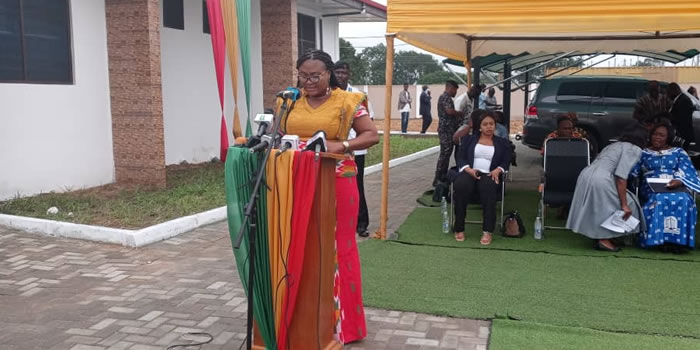

Municipal Economy
Structure of the Economy
The Ga East Municipal Assembly has a great deal of opportunities for both private investment and joint ventureship with the public sector. This is due to the enabling factors for development coupled with the infrastructure set-up and the Municipality’s proximity to the nation’s capital, Accra. There are four main economic activities in the District which are commerce, agriculture, service and industry.
Household Income and Expenditure
The Municipality can boast of an average household income of GH¢6,899.33 per annum whilst the average household expenditure stood at GH¢5,670.67 per annum for the year 2016. The population with the highest income level is the mine workers. Farmers are believed to be the lowest income earners in the Municipality. This is because most of the farmers practice subsistence agriculture due to inadequate capital for production and inadequate knowledge in new agricultural techniques. As a result, the poverty level of people in the area is generally high
i) Revenue and Expenditure Status
The revenue of the Ga East Municipal Assembly for the 2016 fiscal year stood at GH¢13,022,837.00whilst expenditure for the same fiscal year was GH¢12,364,350.47. Tables 1.1 and 1.2 show the total revenue for the year 2014 to 2016 as against expenditure for the same fiscal years.
Comparing the revenue figures for 2014 to 2016, there is a clear indication that, the revenue figures have increased over the years and this is a good sign for development since more developmental projects can be implemented.
ii) Employment
From the 2010 Census, wholesale and retail; repair of motor vehicle and motorcycle is the highest employer of the labour force employing 29.8 percent followed by 13.1 percent in manufacturing. Another 9.7 percent of the population are in to construction, 8 percent in other services activities, and 7.4 percent and 6.5 percent are engaged in accommodation and food services activities. Those in employment are managers, professionals, clerical support staff; skilled agricultural workers, plant and machine operators among others. Those employed by the government are 8.6 percent with the rest being private sector workers. The vibrant private informal sector underscores the need to create an enabling environment to maximize its contribution to economic activity in the Municipality.
Figure 1.10: Composition of Employment
Local Economic Development
Local Economic Development policy is usually defined as special activities, undertaken by public or private groups, to promote economic development. Economic development can occur through local job growth using local resources. Local Economic Development programmes are argued to accelerate development. The most common barriers to Local Economic Development in the municipality include lack of skilled labour, high cost of land and lack of capital.
GEMA natural resource available is land, water and refuse which can be used to create local job. The benefits of Local Economic Development will be greater if additional infrastructure in the Municipality is considered thus, there is the need for additional and upgrading of infrastructure. For example, the road network can be upgraded to ensure easy access and decrease congestion.
The unreliable nature of electricity supply in the Municipality is another area of concern. Majority of the gainfully employed persons are into wholesaling, retailing, petty-trading, and repair of motor vehicles and motor cycles and other service-related jobs. The need for business expansion in the Municipality is also worth considering. Numerous business opportunities exist in the Municipality.
Markets
The Assembly’s traditional market pattern has been towards the south in Dome, Haatso and Taifa through to the central business city of Accra. The rural areas to the north one has been constructed at Abokobi but not in use. Dome is the major market center in the district with Haatso and Taifa playing complementary roles. Dome is a fast growing market which provides services to traders in and around the area. Haatso however has the potential of rivaling Dome in terms of provision of these services. The Dome market functions daily with Tuesdays and Saturdays as major market days. Items traded in these markets includes perishable and non-perishables like manufactured commodities, imported goods like cloth, utensils and a variety of spare parts. Other goods are cereals, livestock and second hand clothing.
The strategic location of these markets coupled with good accessibility has facilitated their growth leading to congestion and spill-off onto the nearby roads. There are however some uncompleted market facilities at Haatso main and yam market. These market needs to be completed to facilitate the decongestion of the Dome market. It is important therefore to improve infrastructure facilities in the Haatso yam market.
Revenue Mobilization
The Assembly recognizes the need to mobilize internal funds to support its development efforts. To this end, the Municipal Assembly has been divided into nine (9) divisions to enhance collection, supervision as well as monitoring. A number of revenue contractors have also been engaged to ensure that all rate payers are reached.other strategies adopted by the Assembly to ensure increased revenue mobilization are the organization of regular meetings with revenue collectors, contractors and the supervisors.
Besides these, public education programmes are regularly organized in communities as well as the markets to educate rate payers. The public education programmes are implemented in collaboration with the Information Services Department and the National Commission on Civic Education (NCCE). In addition, the Assembly has identified easy collectable areas to be collected by the Assembly’s collectors to reduce the huge sums of moneys that go to contractors as commission.
As a long term strategy to increase internal revenue the Assembly in collaboration with a private Consultant is undertaking a programme to develop and implement a revenue generation system. The exercise involves the numbering of houses, naming of streets and capturing socio-economic data on households and houses to be computerized for revenue generation and planning purposes.
The Assembly will also update its property rate billing system with new software which has improved bill security features to eliminate duplication and leakages. A seal stamp will also be provided to stamp security on the property rate bill. Data collection in the field will also be stepped up to enable all business entities to be captured for business operating permits to be generated to prevent under assessment by collectors. Training of revenue collectors and supervisor will continue to equip them to perform better. Last but not the list, payment of commission will be very prompt to encourage collectors to pay promptly to the bank as well as strengthening of the Internal Audit Unit.
i) Challenges with regards to generating revenue
Despite the current efforts to increase revenue, there are challenges and difficulties that the Assembly has to deal with. These includes but not limited to the under listed.
Inadequate data on properties for property rate billing
Inadequate data on business operating entities for BOP billing
Leakages in revenue collection
Too many contractors whose commission eats into the Assembly’s revenue
Delays in banking revenue collected by Revenue Contractors/Collectors.
Diversion of penalties from building without permit by some officials of the Assembly
Carbon shifting by revenue collectors
Date Created : 11/17/2017 9:09:34 AM













 facebook
facebook
 twitter
twitter
 Youtube
Youtube
 +233 593 831 280
+233 593 831 280 0800 430 430
0800 430 430 GPS: GE-231-4383
GPS: GE-231-4383 info@ghanadistricts.com
info@ghanadistricts.com Box GP1044, Accra, Ghana
Box GP1044, Accra, Ghana